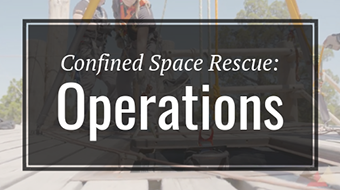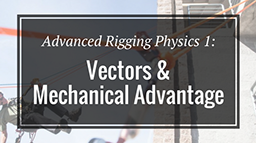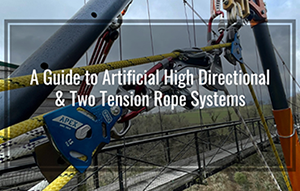Welcome to Confined Space Rescue Demonstration: Operations. This demo will provide you with the theory to operate at the NFPA confined space rescue operations level. As rescue is a skill-based event this theory needs to be matched with skill-based follow up training prior to you trying this on your own.
NFPA (National Fire Protection Association) defines Confined Space Rescue Operations Level as a specialized level of technical expertise and training required for rescuing individuals from confined spaces in hazardous environments. This level of proficiency is based on NFPA 1006: Standard for Technical Rescuer Professional Qualifications and NFPA 1670: Standard on Operations and Training for Technical Search and Rescue Incidents.
A Confined Space Rescue Operations Level responder is capable of performing rescue operations within confined spaces while dealing with hazardous atmospheres, potential entanglements, and various obstacles that can complicate rescue efforts. These responders possess the knowledge, skills, and equipment necessary to safely and effectively manage confined space incidents. They often work as part of a larger rescue team, employing a range of specialized tools and techniques to successfully extract individuals from hazardous environments.
Key aspects of Confined Space Rescue Operations Level include:
- Hazard Recognition and Evaluation: Responders at this level are trained to identify and assess potential hazards within confined spaces, including toxic gases, flammable materials, oxygen-deficient atmospheres, and physical obstacles.
- Atmospheric Monitoring and Control: Confined space rescuers are skilled in using atmospheric monitoring equipment to assess air quality and ensure safe conditions for both rescuers and victims. They can implement ventilation strategies to mitigate hazardous atmosphere conditions.
- PPE and Equipment: These responders are trained to use personal protective equipment (PPE) suitable for the confined space environment, including respiratory protection, fall protection, and specialized clothing. They are proficient in operating and maintaining rescue equipment such as hoisting systems, pulleys, ropes, and rigging systems.
- Patient Assessment and Extrication: Confined space rescuers are capable of providing basic medical care to individuals in need and effectively extricating them from confined spaces using various techniques. They can manage victim packaging and lifting systems to ensure a safe and controlled evacuation.
- Communication and Coordination: Effective communication and coordination are crucial in confined space rescue operations. Rescuers at this level understand how to maintain clear communication within their team and with other responding agencies to ensure a smooth and organized rescue operation.
- Risk Management and Decision-Making: These responders are trained to assess risks and make informed decisions based on the conditions present in the confined space. They understand the importance of maintaining situational awareness and adjusting their approach as the situation evolves.
- Training and Qualifications: Confined Space Rescue Operations Level responders undergo specialized training and meet the requirements outlined in NFPA 1006 and NFPA 1670. This training ensures that they are adequately prepared to handle the complexities of confined space rescue incidents.
It’s important to note that specific requirements and guidelines may vary based on local regulations and the specific needs of the rescue organization. Confined Space Rescue Operations Level responders play a critical role in ensuring the safety of individuals in hazardous environments and require ongoing training to stay current with the latest techniques and equipment advancements.





